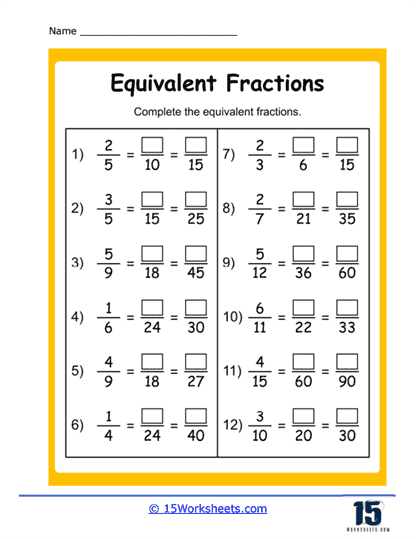Equivalent fractions are fractions that may look different, but represent the same value. Understanding equivalent fractions is important in mathematics as it helps simplify calculations and comparisons of fractions. One way to find equivalent fractions is by multiplying or dividing both the numerator and denominator by the same number.
Working on a worksheet on equivalent fractions can help students practice and reinforce their understanding of this concept. It provides them with the opportunity to apply what they have learned and improve their skills in identifying and creating equivalent fractions.
Worksheet Questions
1. Convert the following fractions into equivalent fractions:
- a. 2/4
- b. 3/6
- c. 4/8
2. Create a pair of equivalent fractions for each of the following fractions:
- a. 1/2
- b. 3/5
- c. 7/10
3. Compare the following pairs of fractions and determine if they are equivalent:
- a. 4/6 and 2/3
- b. 5/8 and 10/16
- c. 3/5 and 9/15
4. Fill in the missing numerator or denominator to make the fractions equivalent:
- a. 3/4 = 6/__
- b. 2/5 = __/10
- c. __/9 = 4/6
5. Solve the following word problems involving equivalent fractions:
- a. If Tom ate 2/3 of a pizza and his friend ate 4/6 of the same pizza, did they eat the same amount?
- b. Sarah has 1/4 of a cake left, while Emily has 3/12 of a cake left. Who has more cake left?
Completing a worksheet on equivalent fractions allows students to practice various skills such as simplifying fractions, finding common denominators, and comparing fractions. It also helps them develop their problem-solving abilities and critical thinking skills in the context of fractions.
By regularly working on worksheets like these, students can build a strong foundation in understanding fractions and enhance their overall math proficiency.

